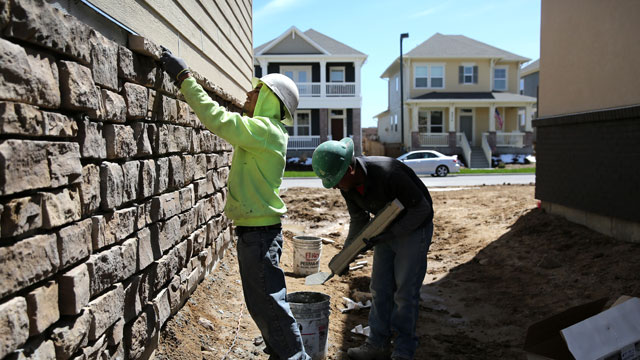
by Alex Nowrasteh
The alleged murder of Kate Steinle in San Francisco by illegal immigrant Juan Francisco Lopez-Sanchez has reignited the debate over the link between immigration and crime. Such debates often call for change in policy regarding the deportation or apprehension of illegal immigrants. However, if policies should change, it should not be in reaction to a single tragic murder. It should be in response to careful research on whether immigrants actually boost the U.S. crime rates.
With few exceptions, immigrants are less crime prone than natives or have no effect on crime rates. As described below, the research is fairly one-sided.
There are two broad types of studies that investigate immigrant criminality. The first type uses Census and American Community Survey (ACS) data from the institutionalized population and broadly concludes that immigrants are less crime prone than the native-born population. It is important to note that immigrants convicted of crimes serve their sentences before being deported with few exceptions. However, there are some potential problems with Census-based studies that could lead to inaccurate results. That’s where the second type of study comes in. The second type is a macro level analysis to judge the impact of immigration on crime rates, generally finding that increased immigration does not increase crime and sometimes even causes crime rates to fall.
Type 1: Immigrant Crime – Censuses of the Institutionalized Population
Butcher and Piehl examine the incarceration rates for men aged 18-40 in the 1980, 1990, and 2000 Censuses. In each year immigrants are less likely to be incarcerated than natives with the gap widening each decade. By 2000, immigrants have incarceration rates that are one-fifth those of the native-born. Butcher and Piehl wrote another paper focusing on immigrant incarceration in California by looking at both property and violent crimes by city. Between years 2000 and 2005, California cities with large inflows of recent immigrants tended have lower violent crimes rates and the findings are statistically significant. During the same time period, there is no statistically significant relationship between immigration and property crime.
Ewing, Martinez, and Rumbaut summarize their findings on criminality and immigration thusly:
“[R]oughly 1.6 percent of immigrant males 18-39 are incarcerated, compared to 3.3 percent of the native-born. The disparity in incarceration rates has existed for decades, as evidenced by data from the 1980, 1990, and 2000 decennial census. In each of those years, the incarceration rates of the native-born were anywhere from two to five times higher than that of immigrants.”
They continue by focusing on immigrant incarceration rates by country of origin in the 2010 Census. Less educated young Mexican, Salvadoran, and Guatemalan men (poorly educated young men are most likely to be incarcerated) make up the bulk of the unlawful immigrant population but have significantly lower incarceration rates than native-born men without a high-school diploma. In 2010, 10.7 percent of native-born men aged 18-39 without a high school degree were incarcerated compared to 2.8 percent of Mexican immigrants and 1.7 percent of Guatemalan and Salvadoran immigrants. These are similar to Rumbaut’s older research also based on Census data from 2000. Controlling for relevant observable factors, young uneducated immigrant men from Mexico, El Salvador, and Guatemala are less likely to be incarcerated than similarly situated native-born men.
However, studies of immigrant criminality based on Census data alone could fail to give the full picture. First, many of the answers given to the Census may have been educated guesses from the Census workers and not the inmates. Second, the government has done a very poor job of gathering data on the nationality and immigration status of prisoners – even when it has tried. That biases me against the accuracy of prison surveys by the Census Bureau. Third, incarceration rates may better reflect the priorities of law enforcement than the true rates of criminal activity among certain populations.
Type 2: Macro Level Analysis of Immigrant Criminality
To avoid the potential Census data problems, other researchers have looked at crime rates and immigration on a macro scale. These investigations also capture other avenues through which immigration could cause crimes – for instance, by inducing an increase in native criminality or by being easy targets for native criminals.
The phased rollout of the Secure Communities (S-COMM) immigration enforcement program provided a natural experiment. A recent paper by Thomas J. Miles and Adam B. Cox used the phased rollout to see how S-COMM affected crime rates per county. If immigrants were disproportionately criminal, then S-COMM would decrease the crime rates. They found that S-COMM “led to no meaningful reduction in the FBI index crime rate” including violent crimes. Relying on similar data with different specifications, Treyger et al. found that S-COMM did not decrease crime rates nor did it lead to an increase in discriminatory policing that some critics were worried about. According to both reports, the population of immigrants is either not correlated, or negatively correlated, with crime rates.
Ousey and Kubrin looked at 159 cities at three dates between 1980 and 2000 and found that crime rates and levels of immigration are not correlated. They conclude that “[v]iolent crime is not a deleterious consequence of increased immigration.” Martinez looked at 111 U.S. cities with at least 5,000 Hispanics and found no statistically significant findings. Reid et al. looked at a sample of 150 Metropolitan Statistical Areas (MSAs) and found that levels of recent immigration had a statistically significant negative effect on homicide rates but no effect on property crime rates. They wrote, “[i]t appears that anti-immigrant sentiments that view immigrants as crime prone are not only inaccurate at the micro-level, they are also inaccurate at the macro-level … increased immigration may actually be beneficial in terms of lessening some types of crimes.” Wadsworth found that cities with greater growth in immigrant or new immigrant populations between 1990 and 2000 tended to have steeper decreases in homicide and robbery rates.
Using panel data on U.S. counties, Spenkuch finds that a 10 percent increase in the share of immigrants increases the property crime rate by 1.2 percent. In other words, the average immigrant commits roughly 2.5 times as many property crimes as the average native but with no impact on violent crime rates. He finds that this effect on property crime rates is caused entirely by Mexican immigrants. Separating Mexicans from other immigrants, the former commit 3.5 to 5 times as many crimes as the average native. However, all other immigrants commit less than half as many crimes as natives. This is the most deleterious finding that I discovered.
Stowell et al. looks at 103 different MSAs from 1994-2004 and finds that violent crime rates tended to decrease as the concentration of immigrants increased. An immigrant concentration two standard deviations above the mean translates into 40.5 fewer violent crimes per 100,000 compared to a decrease of 8.1 violent crimes in areas that experienced a change in immigration concentration two standard deviations below the mean. It is easy to focus on the horrible tragedies when somebody is murdered by an immigrant but it’s very hard to imagine all of the people who weren’t murdered because of the lower crime rates created by increased immigration. In their summary of the research on this topic, they write:
“[T]he weight of the evidence suggests that immigration is not associated with increased levels of crime. To the extent that a relationship does exist, research often finds a negative effect of immigration on levels of crime, in general, and on homicide in particular.
Some immigrants from certain countries of origin may be more crime prone than others, as Spenkuch finds above. To test this, Chalfin used rainfall patterns in Mexico to estimate inflows of Mexican immigrants. The idea is that lower rainfall and a decrease in agricultural productivity in Mexico would push marginal Mexican immigrants out of Mexico and into the U.S. labor market. Mexican rainfall patterns and the subsequent immigration had no effect on violent or property crime rates in major U.S. metropolitan areas.
These trends have also been found on the local level. Davies and Fagan looked at crime and immigration patterns at the neighborhood level in New York City. They find that crime rates are not higher in areas with more immigrants. Sampson looked at Chicago and found that Hispanic immigrants were far less likely to commit a violent criminal act then either black or white native Chicagoans. Lee et al. found that trends in recent immigration are either not correlated with homicides or are negatively correlated in Miami, San Diego, and El Paso. The only exception is that there is a positive relationship between immigration and black homicide rates in San Diego.
Numerous studies also conclude that the high immigration rate of the 1990s significantly contributed to the precipitous crime decline of that decade. According to this theory, immigrants are less crime prone and have positive spillover effects like aiding in community redevelopment, rebuilding of local civil society in formerly decaying urban cores, and contributing to greater economic prosperity through pushing natives up the skills spectrum through complementary task specialization.
Note on Illegal Immigration
The public focus is on the crime rates of unauthorized or illegal immigrants. The research papers above mostly include all immigrants regardless of legal status. However, every problem with gathering data on immigrant criminality is multiplied for unauthorized immigrants. There is some work that can help shed light here.
With particular implications for the murder of Kate Steinle, Hickman et al. look at the recidivism rates of 517 deportable and 780 nondeportable aliens released from the Los Angeles County Jail over a 30-day period in 2002. They found that there is no difference in the rearrest rate of deportable and nondeportable immigrants released from incarceration at the same place and time. Their paper is not entirely convincing for several reasons, the most important being that their sample does not include the higher risk inmates who were transferred to state prison and were subsequently released from there. There are also findings in their paper that seem to contradict their conclusion that aren’t adequately accounted for. This is only one study of one sample in one city but the results should be incorporated into any argument over sanctuary cities.
Conclusion
Both the Census-data driven studies and macro-level studies find that immigrants are less crime-prone than natives with some small potential exceptions. There are numerous reasons why immigrant criminality is lower than native criminality. One explanation is that immigrants who commit crimes can be deported and thus are punished more for criminal behavior, making them less likely to break the law.
Another explanation is that immigrants self-select for those willing to work rather than those willing to commit crimes. According to this “healthy immigrant thesis,” motivated and ambitious foreigners are more likely to immigrate and those folks are less likely to be criminals. This could explain why immigrants are less likely to engage in “anti-social” behaviors than natives despite having lower incomes. It’s also possible that more effective interior immigration enforcement is catching and deporting unlawful immigrants who are more likely to be criminals before they have a chance to be incarcerated.
The above research is a vital and missing component in the debate over the supposed links between immigration and crime.
Alex Nowrasteh is an immigration policy analyst at the Cato Institute’s Center for Global Liberty and Prosperity.



